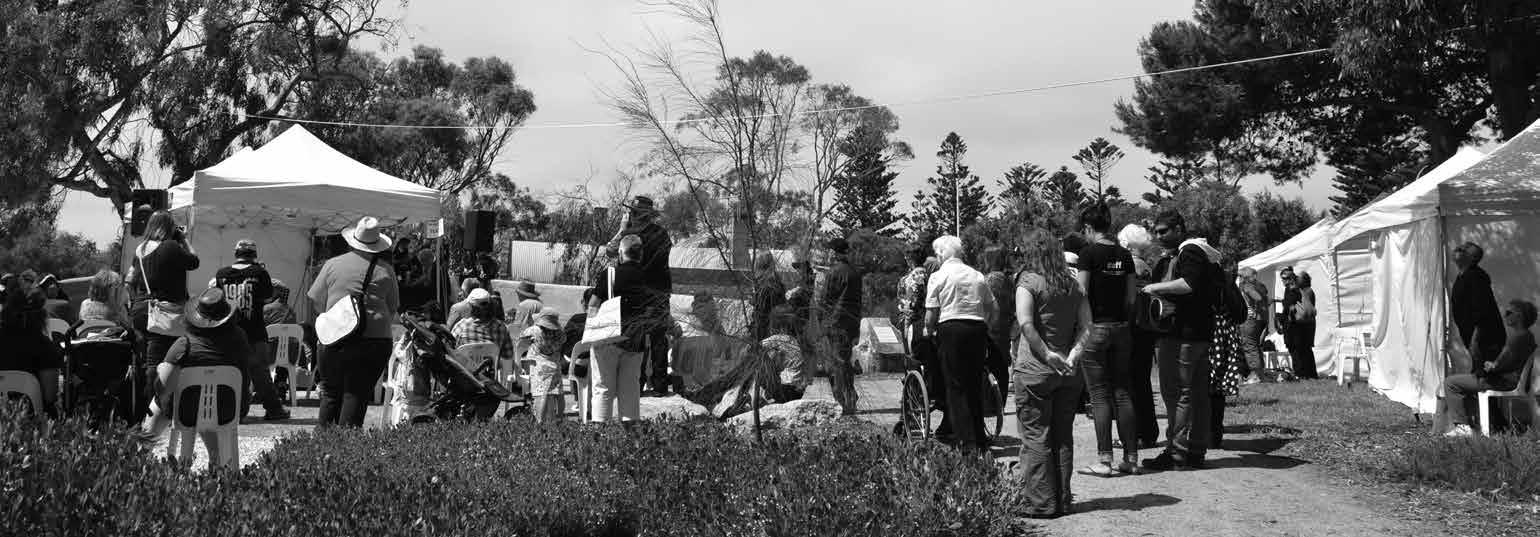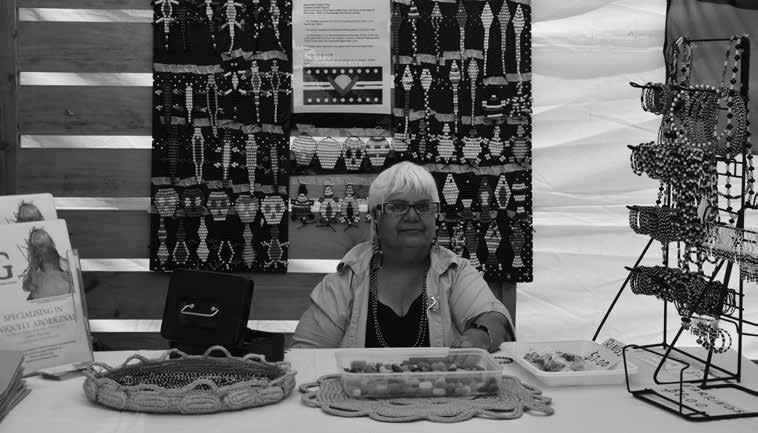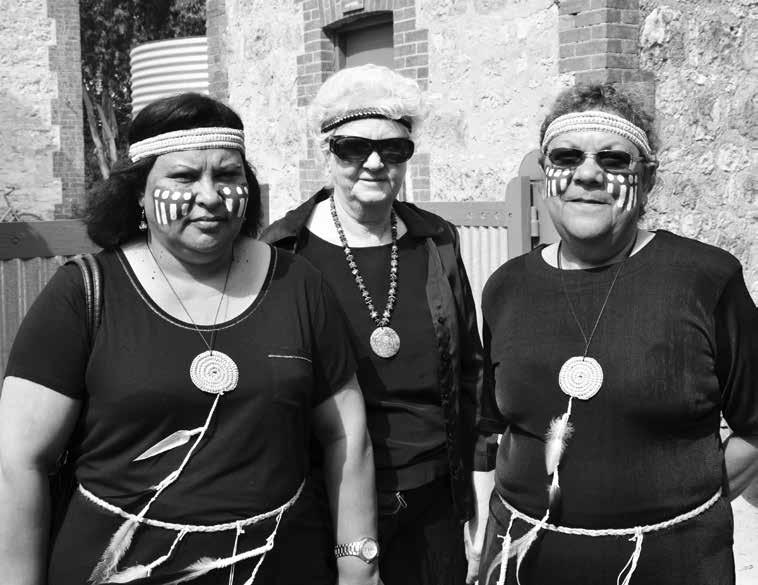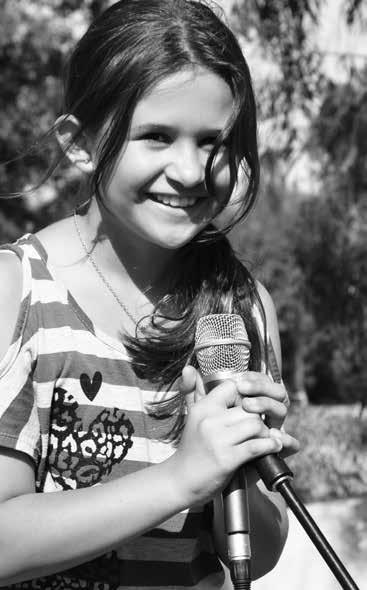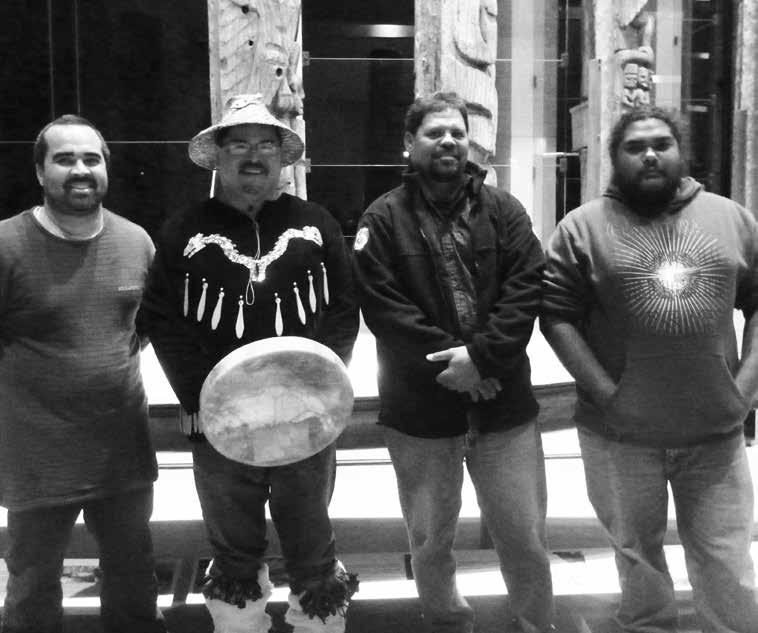
10 minute read
Inside: From the Kimberley to Vancouver
From the Kimberly to Vancouver – Australian Indigenous ranger’s travel to Canada
Indigenous rangers from the Kimberley Land Council and the Central Land Council recently took part in a 10-day exchange with Canadian First Nation Peoples as part of a new global initiative under the Indigenous Rangers Network program.
Advertisement
Organised by the Pew Environment Group and funded through the Federal Government’s Working on Country program the exchange aimed to connect traditional knowledge and ideas from around the world for best practice land and sea management. Daniel Oades, an Indigenous Ranger from the Kimberley Land Council who took part said the exchange was worthwhile because it gave Canadian and Australian traditional owners an opportunity to meet and share experiences. The Canadian first peoples “were very welcoming to us and interested in what we had to say and it gave us the chance to listen to other people’s circumstances”
“Some Canadian first peoples have treaties and others are still fighting for land rights, and it gave us a good understanding not only of their circumstances but also to compare the way things work back home”, he said. “The experience was definitely worthwhile. We can only benefit from sharing ideas and it increased my knowledge about how others manage their land. Indigenous peoples have an important and legitimate role in helping to manage the global environment, and hopefully Australia’s commitment to this program will encourage other countries to become involved”, he said.
Federal Environment Minister Tony Burke said the Indigenous Rangers network is an important environmental achievement.
“This global network recognises Indigenous peoples’ traditional knowledge to protect and nourish the land and sea, contributing to the social and environmental health of their own nations and the world.
The expansion of the Indigenous Rangers network is one of the most important environmental achievements of this Government,’’ said Mr Burke.
This was the first of several exchanges in the lead up to the inaugural international network conference in Darwin in May 2013. The conference will bring Indigenous peoples and local communities together from around the world to shape the network and ensure its long term viability.
Australia led the initiative and recruited Brazil, Norway and New Zealand to form the Indigenous Peoples and Local Communities Land and Sea Managers Network at the Rio+20 sustainable development conference in Brazil earlier this year.
Above: Rangers at Vancouver University of British Columbia.
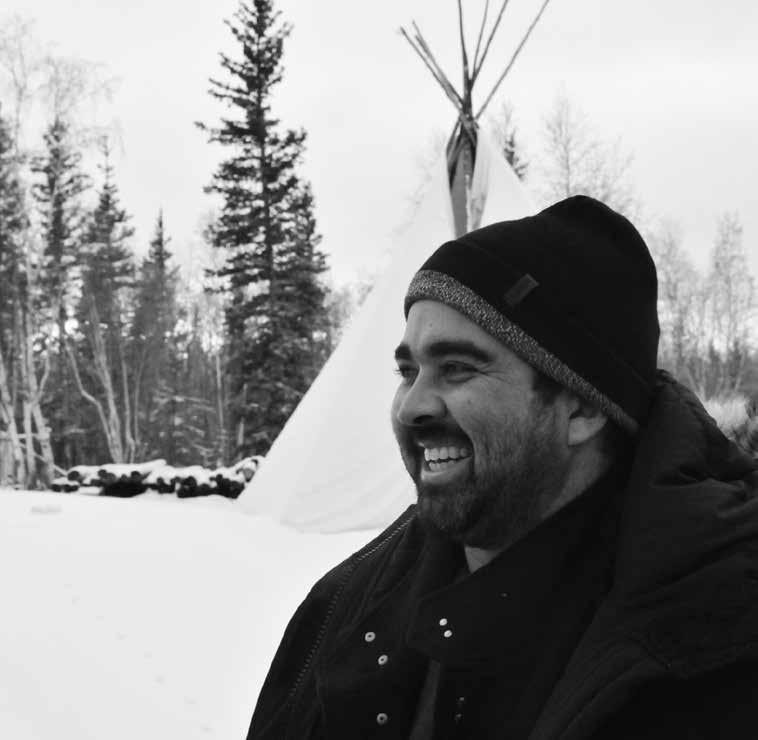
Above: Daniel Oades at Dene camp near Detah NWT.
We’ll fight for Fishing Rights
continued from page 1
Keith Thomas, South Australian Native Title Services (SANTS) CEO, said the Supreme Court’s decision is disappointing and one that affects all native title holders.
“The decision is problematic for all holders of native title and those who may achieve native title. People will continue these practices but as it stands they are at risk of criminal charges and hefty court fees”, Mr Thomas said.
Tom Trevorrow, Ngarrindjeri Elder and Chair of the Ngarrindjeri Regional Authority said it is “totally wrong and unacceptable for the State of South Australia to attempt to forcefully take away the first peoples traditional fishing rights.” “It is an abuse of our basic human right, it is our right under the rights of native title and it is a right under the Letters Patent of 1836 which established the province of South Australia which recognised the right of the native inhabitants to enjoy and occupy their lands and waters and for their descendants to do so. And furthermore it is a joke that the State Government tells us that we can’t fish or gather cockles within our own sea country. We don’t operate outside the law, we operate within our own legal framework, these are our laws and they preceded settlement. The State can try and deny legitimacy of our law systems of Aboriginal management and resource allocation of natural resources but they cannot deny its existence. Aboriginal people have a moral and legal claim to fish not only based upon management of resources and material needs but also on the rights that originate within our culture.
The Ngarrindjeri people will continue to practice and carry out our cultural tradition of fishing for our food and to manage our resources and if this means breaking the state of South Australia’s fishing law which has been introduced because of their own greed and mismanagement then so be it. Those laws cannot stand in the face of the ideas of a just settlement in the Letters Patent of 1836, Australia’s human rights obligations, or the sense and wisdom of Aboriginal customary laws to fish,” Mr Trevorrow said.
The Supreme Court’s decision came after the Department of Fisheries and Aquaculture appealed the acquittal of two Narungga men, who were charged with taking 24 undersize abalone from Yorke Peninsula in 2009.
Owen John Karpany, 59, of Kapunda, and son Daniel Thomas Karpany, 24, who belong to the Narungga people, were charged under the Fisheries Management Act 2007 after they were found with greenlip abalone meat at Cape Elizabeth, south of Port Hughes on Yorke Peninsula. SANTS Principal Legal Officer, Andrew Beckworth said the Supreme Court findings in the Karpany case mean native title holders that had the right to fish determined by the federal court may no longer exercise and enjoy those rights and those that are claiming native title rights to fish would be unable to have those rights determined. An appeal by Mr Karpany has been referred to the full bench of the High Court and is expected to be heard in February next year. Mr Beckworth said “SANTS has intervened in this matter in order to protect native title rights of Aboriginal People in South Australia. SANTS remains optimistic that the High Court will overturn the decision of the Supreme Court,” he said.
A two day celebration and showcase of Ngarrindjeri arts and culture was presented for the first time as part of the nation’s largest arts industry event.
The biennial Regional Arts Australia National Conference, Kumuwuki/Big Wave held in Goolwa from 18–21 October showcased some of Australia’s best regional-based artists with a focus on the local Aboriginal culture. It was the first in the event’s 14 year history to have a dual Indigenous/ non-Indigenous title. During two days of the four-day conference, a special Ngarrindjeri Sharing circle was set up in Jekejere Park behind Goolwa’s cultural arts centre.
The sharing circle gave people the opportunity to meet Ngarrindjeri people from the region and learn about basket weaving, tracking and fishing, making a Pulgi (humpy home), bush tucker foods, hunting tools, musical instruments, clothing, singing, dancing and dreamtime. Ngarrindjeri Elder Aunty Eileen opened the sharing circle and welcomed everyone to join the celebrations. She said the event was a good opportunity for people to learn about Ngarrindjeri culture. “The Sharing Circle is a chance for Ngarrindjeri people to showcase our culture through expression of getting together and sharing how rich a culture we have. Our culture is about celebrating life with respect to family and the lands and waters we have lived in for thousands of years” Aunty Eileen said. The Minister for Aboriginal Affairs & Reconciliation, Hon Paul Caica MP, was also there to open the sharing circle and welcome the public. Minister Caica said the sharing of Ngarrindjeri culture was an important step in the wider reconciliation process. “This festival highlights the very important role that culture plays not only for Aboriginal people, and in this instance the Ngarrindjeri people, but also to the broader community. Events like these are vital to the reconciliation process. I just think it is wonderful, and anyone who was here today to witness the dancers and the singers could not help but be impressed. We can all learn from our first peoples, not only about how we can live our lives but the relationship between the way we live our life and the environment,” said Minister Caica.
Tom Trevorrow, Ngarrindjeri Elder and Chair of the Ngarrindjeri Regional Authority held a workshop Living Culture Camp Coorong as part of the showcase. The workshop allowed people to handle hunting tools and historical artifacts. Mr Trevorrow said that the sharing circle was important because it gave people an understanding of how Aboriginal people survived. “It’s good because it gives people an opportunity to touch and feel the instruments. People do not always know whether they can touch them but here we are saying ‘go on’. It gives them a real understanding that Aboriginal People knew how to survive.
“Some of the tools are still used today, so having them on display and getting people to see and touch them and ask questions about them, it shows that it’s an ongoing cultural way”, said Mr Trevorrow.
Stephanie Gollan, Ngarrindjeri artist and cultural instructor based in Adelaide led the children’s Animal Stencils and Jewellery making workshop with a bush animal theme.
Ms Gollan said cultural events like this are important in celebrating Ngarrindjeri history and reminding people that the Ngarrindjeri culture is still alive today. “Our people have been here for a long time and we are celebrating this with the sharing circle. We have kept up with our technology, our arts and language and we want to pass on our knowledge to our children. We would also like non-Aboriginal people to learn about our culture that is over 50 thousand years old.
That’s what I love about Kumuwuki – Big Wave, having the sharing circle is to show that we are maintaining our culture and keeping our ancestors happy and we are doing our best to keep history alive for the next generation,” said Ms Gollan. Indigenous Arts Engagement Officer at Country Arts SA and event organiser Mandy Brown said it is important for indigenous and non-indigenous people to get together. “it is important to have an open forum where people feel comfortable and it’s interactive so it’s different to just buying Aboriginal art, it’s about interacting and talking to Aboriginal people, to elders and finding out about our culture. “A lot of people aren’t aware of Ngarrindjeri culture and people have been asking a lot of questions. Some people from Gawler were unaware that there were still Ngarrindjeri people living in this region,” she said.
Ms Brown said the event was also an opportunity for Ngarrindjeri people to meet and share stories.
“It’s been an emotional experience for many people, people have been able to open up and learn by listening to elders and it’s been a lovely environment for people to come together and share their stories.
The coming together of the Ngarrindjeri community has been great and then also being able to collectively share our stories and knowledge with other mobs and non-Indigenous people has been better than expected ”, said Ms Brown.
Local Gawler resident, Elwyn Heinrich agreed that the event was a great way for Ngarrindjeri to share their culture with the wider community.
“It’s been good to have a look around and see what’s going on, I cannot say I know much about Ngarrindjeri people. There are quite a few different events that happen in Gawler and it is good for different cultures to be shared with others,” he said.
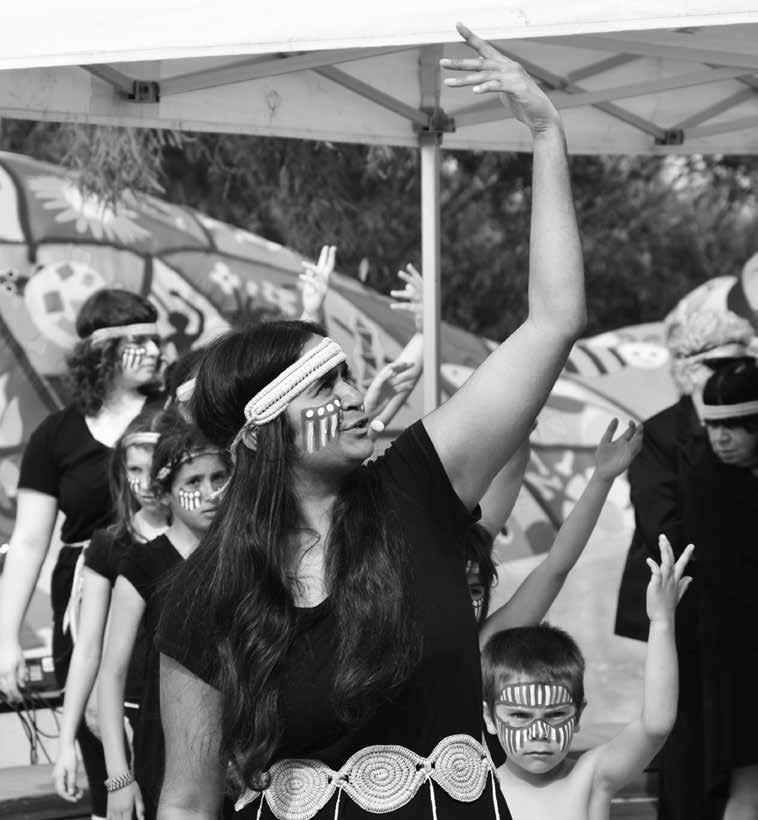


This page: Above and top right: Rritjarukar (Willy Wagtails) Choir performing at Narrindjeri sharing circle. Bottom right: Vicki Hartman and Tom Trevorrow. Opposite page: Clockwise from top: Narrindjeri sharing circle; Anita Wano, Jillian Heppner, Vicki Hartman; Ariarna Rigney; Aunty Eileen (holding baby) in the Narrindjeri sharing circle; Aunty Muriel Van Der Byd and Minister for Aboriginal Affairs Hon. Paul Caica; Participants in the Pulgi (Humpy home); Children from the Rritjarukar (Willy Wagtails) Choir; Stephanie Gollan selling her Jewellery at the sharing circle arts market.
